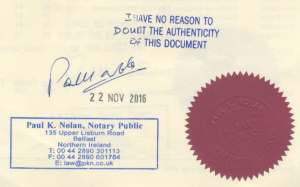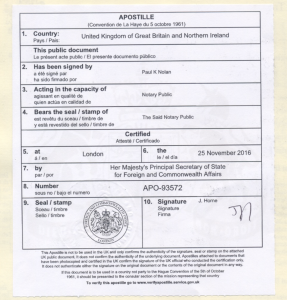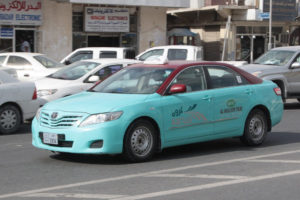Cutting Edge
To stay ahead of the game, we must continually search for new ways of working and learning together.
High Performance
To compete with the best, we need to continually raise the bar, improve ourselves and embrace an ever evolving world.
Innovation
To stay relevant we need to learn to embrace change, develop new habits and continually evolve our ideas.
How to complete a Married Contract Status in Qatar
Each year non-Qatari employees with married contact status are asked to prove that their spouse was in Qatar for at least 180 days. This is to avoid fraud by people claiming their wife lives with them when in reality they live abroad.
Luckily, with the introduction of Metrash 2, Qatar’s online government app, this process is easy to undertake.
Step one is to download Metrash 2 from the Apple or Google App Stores and link it to your phone number. Then you will need to go into the app and find the Settings (top right-hand menu). Then click Email Configuration and make sure your email address is set up.
Then from the home page, make sure Services is selected from the top menu and go to Leave Notifications > Traveler Transactions.
Fill in the dates (usually 1 January to 31 December of the year in question) and put in your spouse’s Qatar Residents Permit (QID) number. Make sure your email is showing and click NEXT. Now pay the QAR10 fee via credit card. At this point, a PDF with all the relevant information in Arabic will be emailed to you!
Then all you need to do is check the dates are correct and print this and give it to your HR department as proof of when your spouse was in the country during the past 12 months.
Licensed to Drive
Getting a driving license in Qatar used to be easy if you were from a list of mainly western countries. Simply hand over your home country driving license and they give you a Qatar one. However, in January 2017 the process changed. Now EVERYONE has to go through the following series of steps:
- Eye test and document check
- Driving theory test
- Practical driving test
Exact details on how to do this are quite vague so here is my experience of what you need to do as an ex-pat with a valid western license.
Step 1: Eye test and document check
The first thing you need to do is gather the required documentation:
- Letter of “non-objection” from your sponsor: addressed to Traffic Department indicating that you are allowed to enrol for driving license. Your Qatar ID number must be mentioned in the letter which needs to be on headed paper.
- A photocopy of your Qatar ID – front and back
- A photocopy of your Passport
- A photocopy of your home country driving license
- Four passport style photographs on a blue background (with glasses if you need them to drive)
- QAR 50 in cash (I’d suggest five QAR 10 notes in case the prices have changed)
You’ll then need to take all of these to the Karwar Driving School in the Industrial district first thing in the morning. The driving school is easily found on Google Maps and I used Uber to get there. The entrance has light green gates.
When you arrive go to the front desk and tell them you need to start a new application. They’ll probably give you a number and send you to the correct room to begin the process. Having taken most of your documents off you and begun the application form you’ll then need to pay for the Eye Test. I think you need to do this in cash and it cost me about QAR 20. You then take the application form (with all your photocopies stapled to it) to another room where they test your eyesight using the standard board with rows of letters. If you have to wear glasses to pass this then it is important that you are wearing these in the photographs you supply. My initial photos were without me wearing glasses so I then had to leave to go and get another set taken before I could proceed with the eye test.
Having completed the eye test and had all the application forms filled it you then go to another room and book your theory test. This will be for a future date and you have to pay for it by card.
Step 2: Theory Test
My theory test was due to start at 7:00 am but I wasn’t called until 07:45. The theory test is administered by computer and involves 20 multiple choice questions. An example question might be that they will show you a road sign or set of road markings and ask you what they mean. The English answers are not always well translated but you should be able to get enough to pass without studying for the test. If you want to brush up on some signs as they appear in Qatar you can find some on the Ministry of the Interior’s website HERE. I managed to get 18/20 (enough to pass) and the test took me 10min to complete. Interestingly, in one of the side rooms off the main corridor there is a notice-board that includes a print out of what looks like example questions with the correct answers circled! Have a look for it when you are undertaking step one.
Having passed the theory test you then need to go back to the room where you booked the test and they will then book you a practical test. The wait between booking and attending a theory or practical test can be quite long. I had to wait 4 weeks to do my theory test and then 8 weeks between that and the next available practical test.
Step 3: Practical Driving Test
My practical test was again scheduled for 07:00 am but I wasn’t called until roughly 10:00! It is worthwhile bringing a movie to watch or a book to read! When my name finally was called, myself and two other candidates were shown to a car and told to get in. One in the front and two in the back. My advice is to get in the back because you will go second or third and it gives you time to learn from the first person’s mistakes. We were then told to reverse out of the parking spot and follow the examiner’s instructions.
They proceeded to take us on a drive around the industrial area. There isn’t too much traffic there and a lot of the time was spent in the car park of a shopping mall so the actual driving part was easy. The key thing to remember is to slow down to an almost complete stop when negotiating any speed bumps as you will upset the examiner if there is any kind of “bump” when you go over them! After the first person has driven for about 10-15min you are required to park forwards into a parking space and then the driver gets out and swaps with someone in the back. You then reverse out of the space and drive as normal. Apart from telling me off for going slightly too fast over a speed bump (I was going about 5 miles per hour) my examiner didn’t say anything else except to tell me directions.
That’s all folks!
Assuming you don’t drive the wrong way down the road, you shouldn’t have any problem passing the driving test if you drive the way people do in western countries. Once you arrive back at the Karwa Driving School you then wait in the waiting room for your paperwork to be processed. Assuming you pass you then need to go to another room and pay QAR 200 for your plastic driving license.
Once you have this you can then buy a car… but we’ll talk about that in my next post!
Preparing for a role in Qatar
Having been offered a job in Qatar, the hard work really begins. To try and ensure everyone who comes to work in the country is appropriately qualified and is likely to be an upstanding citizen, Qatar has strict policies with respect to the documentation you will need to provide before you will be granted a work visa.
The process has four steps:
- Obtain all the relevant paperwork. If the paperwork is in a language other than English you will need to have a translation made.
- Have the authenticity of every page of each document certified by a Notary Public
- Have the authenticity of every page of each document attested by the government of the country in which it was issued (the UK in my case)
- Have the authenticity of every page of each document (and so the each of the previous steps) attested by the Qatar Ministry of Foreign Affairs – first in your home country and then later in Qatar.
Step 1: Obtain all the relevant paperwork
While the exact documents may vary from employer to employer, these are the key documents Aspire Academy required me to provide:
- University Degree paperwork including:
- My original University Degree Certificate
- My original University Transcript – this includes all the grades that I obtained for every course while I was at University
- A cover letter from my University stating that all parts of my degree were conducted in person and that no parts was conducted online. This is important because Qatar does not recognize online degrees.
- A valid police check for emigration purposes
- A letter from my doctor stating that I was fit to work
- A copy of my marriage certificate (as I was bringing my wife with me to Doha)
If any of the above documents are not in English you will also need to have them translated (check with HR about the exactly how to do this as I don’t have any experience of this step). In addition to this list you may need to provide copies of you and your families passports and birth certificates of your children if you have any.
University Cover Letter
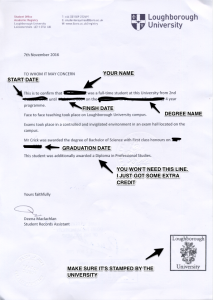
Here is my University Cover Letter which was accepted at the start of 2017. Check to make sure the required wording hasn’t changed before ordering yours! CLICK for a larger view.
The cover letter from your university needs to include ALL of the following things:
- The mode of study: whether full-time or part-time
- The type of study: whether distance learning (E-Learning) or Face to Face learning (on campus learning)
- Location of study
- Location of examinations
- The actual dates of study (start date and the end date)
Since this is quite non specific I have provided a copy of my letter that was accepted for you to copy. I would suggest asking your university to use the exact same wording and to just change the key information such as your name and dates.
Police Check
In the UK the police check is known as an ACRO Police Check. You can apply for it online HERE and it costs GBP 45.00. If you live in another country the process will be different but the basic idea is the same.
Doctor’s Letter
The doctor’s letter can be obtained from any licensed practitioner. When I went to my NHS doctor in the UK they charged me GBP 100.00 to write one for me. Each doctor will word this differently but make sure that no matter what they must include the line “Your Name is fit to work abroad”. This is important because the person assessing your letter may not have English as their first language and so it must be clear that you are fit to work.
My first letter was rejected because this line was missing and the doctor had listed every minor medical incidence I had undergone since primary school (such as breaking my arm in 1996), which made me sound like I was on my death bed. The second letter stating simply “Tom is fit to work abroad” was accepted!
Step 2: Have the authenticity of every page of each document certified by a Notary Public
The second stage is to take all your original documentation that is NOT an official government document to a Solicitor or Notary Public and have them “certify” the document is genuine to the best of their knowledge.
These documents will be – Degree Certificate, Degree Transcript, Letter from University and Doctors Letter. Your Police Check and Marriage Certificate are issued by the government so are in a standard format that the embassy will recognise.
This process is usually used when you want to send a photocopy of an original document somewhere and the person receiving it wants to know it is a real copy. In this case the Notary Public stamps the photocopy. However, like many things in Qatar it was difficult to ascertain if original documents needed to be certified as well so in the end I decided to get all my originals certified anyway. In my case, the notary public stamped my original documents on the back so as not to damage the original.
While it might seem like overkill it is important to make sure that every page of each document is certified at every step of the process. I have heard of people having documents returned because one page was missing the required stamp. Make sure this happens for every page at every step just to be sure.
Step 3: Have the authenticity of every page of each document attested by the government of the country in which it was issued
Since all my documents were issued in the UK I needed to submit them all to the Foreign and Commonwealth Office (FCO). This involved going to their website HERE and following the step by step instructions. It cost me £30 per document (as of 2017). To avoid wasting time if I made a mistake I counted each page as a separate document so, for example, my degree certificate (1), transcript (2) and the letter from my university (1) were each separate documents (4x£30 = £120). In total, I had 6 pages of documents and after paying and printing the cover split sent it all off by Royal Mail Special Delivery. 5 Days later I got my documents back with the white “Apostille” from the FCO on the back.
Step 4: Have the authenticity of every page of each document attested by the Qatar Ministry of Foreign Affairs
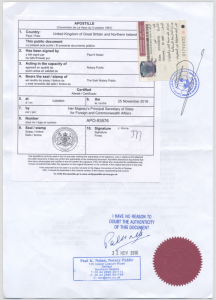
Example of a fully attested document showing all three stamps from the Notary Public, FCO and Qatar Embassy!
The final step in this long process is to send your documents to the Qatar Ministry of Foreign Affairs in your home country. Mine was done in London via their website HERE. It is really important to read the details regarding what they require carefully. I used their tracking system for non-commercial documents. Each sheet cost me £25 so it was £150 for all six sheets. I then went to the Post Office to get a postal order for £150 and sent this along with the covering letter, a self-addressed special delivery envelope and the six document sheets to the embassy by Royal Mail special delivery. About a week later my documents were returned fully stamped!
Now all that was left to do was to scan every sheet front and back and send it off to my employer. At this point, I was then issued a visa to enter Qatar and told to bring all the original documents with me when I arrived!
Mission Completed!
In total this entire process took me five weeks and cost around £400. For me, the key thing was to avoid mistakes by making sure nothing was returned to me and then had to be sent again. You can find companies that will do a lot of the final two steps for you but I was quoted £1500 for the privilege and decided it was not worth it. Also these services often actually take longer than you doing it yourself because they need to undertake their own administration alongside the other steps!
Welcome to Doha!
The thing you really remember about Hamad International Aiport in Doha is the giant yellow teddy bear in the grand foyer.
I caught my first glimpse of the 7m (23 foot) high creature as I descended the escalator to find my luggage. The “Lamp Bear” was created around 2005 by famous Swiss sculpture Urs Fischer and having been originally displayed in front of the Segram building on New York’s Park Avenue was purchased at auction for $6.8million by a member of the Qatar royal family. For me it’s the perfect “Welcome to Qatar” memory that aptly sums up my feelings about the country. Whether you love it or loath it, expect things to be larger than life, memorable and certainly unexpected!
The aim of this blog entry is to give you a sense of what to expect as an expat worker arriving in Doha for the first time. For those like me coming to work at Aspire Academy, it will be almost a step-by-step guide to negotiating your first few weeks of the job. For everyone else the general principles should still ring true. However, one thing we should clear up before getting started is the fluid nature of life in Qatar.
Be water my friend…
Most westerners expect bureaucracies to be static and unchanging. So it can come as quite a shock to discover things are far more fluid in the Middle East. While at home they are accustomed to reading through pages of small print, in Qatar they need to be prepared for a place where policies and procedures change regularly and are rarely documented in a definitive fashion.
Here it is not uncommon for you to be told (or read on the internet) that the procedure you are undertaking will be X, only to turn up at the designated place and find that it has been amended to Y! So be prepared for this and build the time necessary to negotiate changes into your schedule. If you expect a certain procedure to take 2 hours don’t book a meeting into your diary immediately afterwards. Instead, give yourself a few hours leeway just in case something has changed.
So for the duration of your time in the Middle East, take a page out of Bruce Lee’s playbook and be like water – flexible and adaptable to the environment into which you venture.
Making immigration easy…
As an expat worker landing in Doha, your first experience of the bureaucracy that will consume most of your free time over the coming weeks begins at passport control. Here the officials will check your visa and ensure you complete all the required immigration paperwork before allowing you into the country.
By all accounts this is laborious on a good day and can take an hour or two on a bad one. I say “on all accounts” because I have yet to experience it myself and neither should you as for around 325 Qatari Riyal (QAR), or $90 / £72 you can bypass the queues by using Al Maha Services. Al Maha should be booked online before you fly and can be located at the far right hand side of the immigration control area before you line up to show your passport. You can choose from either the Gold or Platinum Arrivals service. I’ve always gone with Gold because the only real difference with Platinum is that they come and find you as soon as you leave the plane and it really isn’t hard to find the Lounge as you make your way through the airport.
When you walk into the Al Maha lounge all you need to do is hand over your passport and baggage tags to the lady at the desk and they take care of all the immigration documents on your behalf. They also go and find your luggage at the same time, which leaves you free to sit and enjoy any of the free drinks or refreshments until everything is done.
Once your bags and paperwork are complete, an Al Maha assistant will then show you through the airport to arrivals. From here it should just be a simple matter of looking out for your driver (if one has been booked for you) or following the signs outside to get a taxi.
Taxi trauma…
Like most places, taxis are readily available in Doha and come in three flavors – green “Karwa”, white “Limousine” and Uber/Careem ride hailing services.
The green Karwa taxis are usually branded up Toyota Corollas. Their distinctive design makes them easy to spot and you can hail them on the street or via their very own (at as of 2017 still flawed) Karwa app (iPhone / Android). The quality of a Karwa driver varies massively depending on their time in the country. If you are lucky they will be exactly what you’d expect from a taxi driver. However, on the whole they will typically have no idea where your destination is unless it is a major mall or the airport. Therefore, you must be prepared to direct them via Google Maps! On the plus side, Karwa rides are very cheap with the exact fare dictated by a meter inside the car, which also acts as a GPS navigation system. To give you an idea of cost a 45min journey across town for around 8 miles will only set you back about QAR 50 ($14 / £12).
The white “Limousine” cars are typically brand new white Honda Accords. You will see them everywhere and if a driver sees you standing by the curb they’ll often try and get your attention by tooting their horn at you. Beware, these cars do not have meters and so the fare should be negotiated BEFORE you get into the car. On the whole prices tend to be more expensive than Karwa with some drivers trying to charge you twice as much for the exact same journey. However, you can usually get them to accept a discounted rate if you haggle a little. I usually just ask them “How much will it cost?” and then take about 15-20% off the price they originally suggest. On the plus side most limousine drivers seem to know Doha better and tend to be safer drivers, although this is not always the case.
Finally ride hailing apps such as Uber or Careem are becoming increasingly popular in Doha. They offer the convenience of you being able to put in your destination so the driver will not get lost and their superior navigation systems mean they usually avoid taking you through the centre of the city at rush hour! Prices are fairly competitive depending on the time of day. The only real negative is that you can’t always find Uber drivers near by.
During my first month in Doha, I would typically use Karwa drivers wherever possible because they helped to keep down costs. I rarely used Uber because payment is made by card and until you get a local credit card this means paying foreign exchange fees and other bank charges.
UPDATE July 2017: After completing my first month in Doha I was able to get a credit card. I then began dabbling with using Uber. Now 5 months in I can honestly say that Uber is by far the best way to travel by Taxi. Because the drivers get feedback they are typically much safer than Karwa or Limousine. Also the prices are very reasonable and the GPS makes it far more likely the driver will know where they are going. In the last 5 months I’ve used Uber at least twice every day and only had 2 bad experiences out of maybe 250-300 rides. My advice now is to just download the app and use it today.
Getting mobile…

Vodafone will be a familiar brand for most expats but that doesn’t mean you should automatically go with it.
Probably the first things you’ll want to do after arriving in Doha will be to get a pay-as-you-go phone SIM. You’ll need this not only to stay in contact with people but also to open a bank account and probably a few other things besides. Getting a SIM to fit inside your existing mobile phone is easy. All you need to do is take your passport to one of the two mobile phone operators that operate in Qatar and pay around QAR 20 ($6 / £5). I went with Ooredoo on the recommendation of a colleague at work but Vodafone also seems to be very popular.
Ooredeoo and Vodaphone have their own outlets all over the place but you can also get SIMs and phone credit at most major supermarkets including Carrefour supermarket, which is located inside the Villaggio Mall adjacent to the Torch Hotel for anyone beginning work for Aspire.
In the future, you may decide you want a post-paid phone contact but that will only be possible once you have your residency permit. However, the pay-as-you-go prices in Qatar are very reasonable so I have yet to make the switch. In my first month I only spent QAR160 on my mobile which included 6GB of data for QAR100 and QAR60 on local phone calls.
Dan Pfaff Interview (2008)
 Dan Pfaff is widely regarded as one of the world’s top track and field coaches, having coached 33 Olympians to seven medals and 45 World Championships performers to ten medals – across sprints, jumps and throws. Most famously he coached Donovan Bailey to Gold and a World Record at the 1996 Atlanta Olympics. Recently his list of successes includes Brad Walker, the 2007 Osaka World Champion and now US record holder in the men’s pole vault (6.04m) and Suzy Powell-Roos who broke the US discus record with a 67.67m effort in 2007, a throw that saw her finish the season ranked second in the world. This year Dan’s group at Tri-Valley Athletics, in Stockton California will be sending nine athletes to the Beijing Olympics.
Dan Pfaff is widely regarded as one of the world’s top track and field coaches, having coached 33 Olympians to seven medals and 45 World Championships performers to ten medals – across sprints, jumps and throws. Most famously he coached Donovan Bailey to Gold and a World Record at the 1996 Atlanta Olympics. Recently his list of successes includes Brad Walker, the 2007 Osaka World Champion and now US record holder in the men’s pole vault (6.04m) and Suzy Powell-Roos who broke the US discus record with a 67.67m effort in 2007, a throw that saw her finish the season ranked second in the world. This year Dan’s group at Tri-Valley Athletics, in Stockton California will be sending nine athletes to the Beijing Olympics.
As well as a phenomenal understanding of the biomechanics and event specific requirements of all power speed disciplines, Dan is also know for his in depth scientific knowledge of human performance and his ability to bring athletes back from injury using his unique manual soft tissue treatment methods. In our exclusive interview Dan discusses the often overlooked importance of recovery and regeneration in performance, especially when dealing with the older athlete.
Briefly outline your route into coaching and your mentors?
Well growing up my college football coach was a real free spirit, hippy kind of guy. Back in those days coaches were traditionally very authoritarian and he was a breath of fresh air because he treated people with respect and dignity and showed me that there were ways of coaching other than the military, taskmaster, style.
Academically I was good at science and so I became a high school science teacher specialising in maths, physics and chemistry and this background made it easy for me to then move into areas such as biomechanics and motor behaviour when I started coaching.
In track and field specifically, Tom Tellez (Coach of Carl Lewis) was my greatest mentor. Then as my network of peers began to grow people like Loren Seagrave, Gary Winkler and Victor Lopez became very influential and helped form the philosophy I have today.
You are known for picking up mature or injured athletes and helping them to finally realise their potential. When a new athlete comes to you, how do set goals for that athlete in order to get them to where they want to be?
Well Athletes love to set goals but I have a problem with goal setting because people spend an inordinate amount of time setting primary goals and secondary goals but they always ignore the tertiary goals. That is “what do you have to do to reach those primary or secondary goals?” So you want to be an Olympic finalist but what do you have to do to be an Olympic finalist? How many years do you have to have a performance level of X before you get a performance level of Y? What are the entities that go into those little steps of the ladder? I think goal setting is nice and all the sports psychologists talk about it but there are inherent goals – everyone wants to jump higher and run faster, throw further and most people have a number in their head or a mark or a qualifying standard they want to achieve.
I have seen guys and gals with elaborate goal sheets with all this kind of stuff but they do not do the things that are necessary to reach them. So at the end of the day what did that goal sheet really accomplish? I do not mean to poo poo it but in order for it to be integral it has to be a pyramid where the primary and secondary goals are concretely specified and then the tertiary goals must be worked on in depth. These can then be split into subcategories such as what kind of therapy and how many sessions do I need? What do I have to do with my diet and my nutrition and my supplementation? What do I have to do with sleep? What do I have to do with my lifestyle to eliminate distractions? You can write a PhD on it but everyone gets caught up on the top end of the pyramid and forgets the bottom.
So rather than goals what priorities do you have as a coach?
The first priority is health! So we look at what entities can be addressed to increase the wellness of the athlete. Is it mechanical? Is it inappropriate training? Is it how training elements are being combined? Is it diet? Is it nutrition? Is it sleep? Is it a lack of co-ordination of the therapy groups and the therapy styles?
Our second priority is increased mechanical efficiency because statistics show that the more mechanically efficient you are, the less injuries you have, the higher the degree of performance and the less energy you expend so you then have more energy to spend on rehab and prehab.
Generally with most of the aging athletes that come to me just dealing with those two parameters is the whole deal! If you get those two things going the rest will take care of itself.
How do you go about ensuring athletes can stay healthy?
I think the major problem is that a lot of people are into a stimulus/adaptation motif when it comes to training and instead I feel there are four steps to improving performance. Once you have stimulated and the athlete adapts to that stimulus, then you have to spend a certain amount of time allowing that new performance level to stabilise. Then in the fourth step the athlete must learn to actualise it in any kind of environment and under any kind of stress, at any point in time. I think a lot of coaches fall into the trap of stimulating and adapting and as soon as the athlete looks like they have got things under control they then change something and push forwards for greater gains and in doing so compromise the adaptation process and set the scene for injury.
In addition to being careful with how you progress training, you are known for setting up excellent therapy programs for your athletes. Why do you spend so much time on therapy?
Unless you have integrated sports medicines, therapy, rehab and prehab you will indeed you must, reduce the overall efficacy, volume and density of your training. You simply cannot afford to do this at the elite level because it is a slow virus, you do not know how much you are loosing until it is too late. A top athlete is like a formula one car and have you seen how much fine tuning they do with those things?
What you learn from the therapy sessions also guides what you do in training. If an athlete is not getting regular therapy there are less checks and balances. The ability to run your hands over an athlete and know what is restricted gives you immense inside information into their functioning. You cannot expect the athlete to tell you either because they are terrible barometers when it comes to knowing what they are ready for. Just asking “are you ok for today’s workout?” is not enough because their motivation is so high athletes do not necessarily listen to what their own body is telling them.
Where does the coach fit into the therapy setup?
One of the analogies I use to describe my approach to sports medicine is that joints are pulleys; connective tissue (muscle, tendons, ligaments) are ropes; and this pulley system is driven by a computer. To achieve high performance you have to do correct therapy to rehab and prehab the ropes so they do not fray. You have to ensure the pulleys are clean so that everything can slide efficiently and then you have to clean up any viruses in the computer program to remove guarding or dysfunctional movement patterns.
If you get away from that trinity you are doomed to failure. Now I think there are some very good therapists that can fix pulleys, like chiropractors, but the most common thing you hear with a standard Chiropractor is that “Yeah I felt great but the next day it was back!” This happens because they fixed the pulley but forgot about the soft tissue (ropes) and it pulled the joint right back out of alignment again. Then there are therapists that are really advanced and they fix the joint and clear up the soft tissue pulling at it. However, even then they do not go in and fix the viruses that are controlling the whole thing. So injuries start to go away but do not have permanence because they have missed the role of the coach – to fix the computer.
And so the coach and therapy team must work closely together. After years of doing this I have come to understand sports medicine and soft tissue work myself and so now I can understand what needs to be done from all angles, co-ordinate the team and do some of the necessary treatment myself. If the coach knows and understands therapy they are in a better position to consistently get the improvements they want from their training programs.
You also seem to spend a lot of time talking about rest with your athletes.
That is a problem steeped in the authoritarian roots of coach as taskmaster. Rest and recovery are significantly under appreciated by coaches and athletes alike. We spend copious hours and tons of energy studying work. How do we do this workout? How do we do these activities? We research it to death and talk to our colleagues about it. If you had a microphone on and if you monitored how much time you and the athletes spend thinking and talking about work and you compared it to how much you spend on rest you would be shocked. It is probably less than 1%. As I have aged and coached aging athletes, I have come to appreciate that designing and implementing rest and types of rest is perhaps more important than work and the types of work.
I think that is why in some countries we see great youth programs, great junior programs and then when they get to the emerging and elite level it stops. The culprit is the work to rest balance and when that is not correct the injuries mount. If you do not have a great medical team then you are dead in the water; that athlete is out of the sport.
Despite your best efforts you cannot always prevent everything. When things do go bad how do you deal with it?
If things are not going well we move to plan B, and as a rule of thumb plan B is “try and stay as close to plan A as possible!” This means that we do not stop training just because we are injured. If we cannot run we do bike workouts to keep the chemistry going. If we cannot throw we look at what things we can do in the weight room to replace that. You can do more than you might expect with Plan B. I mean there was a time when Obadele Thompson had a nerve entrapment in his foot and did bike workouts for three weeks. He did a test sprint workout one day before he flew to Japan and then he did a lifetime best in the 200m – 19.9 something into a 1.80m/s headwind and he had not even run a step in three weeks!
Even for more serious injuries that require surgery it is important that you keep training going as much as possible before the operation so the athlete’s systems are amped up ready for recovery. At Tri Valley athletics I have a few masters athletes with cancer and one of the main aims of our training is to get their body into as good physical condition as possible before they go in for chemotherapy to minimise the functional decline that inevitably comes with the treatment.
When you have a good young developing athlete who is showing potential to move on to greater things, as a coach what should you be aware of as they develop?
When you have a gifted junior, you will see certain strengths. Keep those strengths, even embellish them, and then put them on the shelf whilst you are fixing weaknesses. Always keep the strong cards alive but don’t let the weaknesses become a psychosis.
The athletes read us, so if we put a lot of time and emotion, energy and concern into weaknesses, then pretty soon those weaknesses are magnified because of our intent. Similarly if we don’t praise the strong points they begin to wonder if these strengths are really strong anymore. So the day to day management of psychological issues is really important.
As an athlete’s body develops they become physically able to handle different types of training, tempting you as a coach to try new things. Perhaps the timeframe for introducing these things and getting good at them should be two years. However I often see coaches rushing to implement stuff over a couple of months because they believe other athletes are already proficient at the exercise and so their athlete must catch up, increasing the chances of injury while failing to maximise the potential gains from the exercise due to poor adaptation. Bounding is a good example of something that is often introduced too quickly and without a structured progression. Instead of jumping straight in, we might first introduce straight leg scissor bounds or flexed leg scissor bounds and then later skips for height and eventually my entire “rudiments” series (Dan has several series of exercises for athletes in all power speed events, which can be seen on his General Strength DVD). Having learned the technique there must then be an incubation period to master these drills so the athlete does not become sore and develop injuries. After this stabilisation phase you then systematically introduce the exercises that you think a person of this training age and experience should have in their arsenal. For me unrushed, systematic, gradual, uniform change to a programme is the key to developing the talented athlete.
Another potential pitfall for the developing athlete is as they mature, their life becomes more complex. So when they were young and training in a controlled environment they behaved in a certain way. Now they may be living alone, going to university or working, they may have to drive across town to train with you, they get into relationships and invariably they get out of relationships. Everything becomes more complicated as they get older. As coaches we have to understand these factors and manipulate training to fit around the athlete. We have to consider if we can reduce these factors and if we cannot, then we might have to train an athlete lighter then when they were a junior. It is counter intuitive but it works. I have had kids that have gone to medical school and on Saturdays I can get something done because they are excited and glad to be out of the classroom. Well my instinct says lets try and do a session on Sunday too but they are so tired from a week of study and Saturday’s workout that Sunday is just not a good day to train. I have had kids that trained just on a Tuesday, a Friday and a Saturday and had them make NCAA finals and International teams because they already had enough background as a junior, we just identified a few key themes that they needed to keep going whilst they studied.
So with these young athletes how do you go about creating a base for them?
Everyone talks about building a base before we train and my question is, ‘a base of what?’ People talk about an aerobic base but I prefer the term ‘work capacity’ because to develop as a power speed athlete you need to be able to handle a certain volume of event and power specific work. So I create my base through general strength circuits, medball workouts, multiple jumps and weight training – regardless of whether they are a sprinter, hurdler, thrower or jumper. For example, on one of our days we do 1-2 bodyweight general strength circuits, 1-2 med ball circuits and a hurdle mobility circuit. Now to do all of these routines takes between 38-42min and we’ve put heart rate monitors on our people and their heart rates never drop below 140bpm. As a result the athletes got 40 minutes of aerobic activity doing power speed related motor specific exercises as well as prehab and rehab work which is much more time efficient than going for a 40min run or sitting your bum on a bike for 40m because now you covered four things at once and saved a lot of energy and therapy time!
So for power speed athletes (sprints, hurdles, jumps and throws) what systems do you train?
Fundamentally we train Frank Dick’s five bio motor abilities (speed, stamina, skill, suppleness and strength) and then each one of those categories has maybe 20-30 subcategories. Energy system wise we are primarily training ATP and alactic systems but more interestingly we work on training neurochemistry and neuropsychology which are the most important factors for power speed athletes.
What is neuropsychology?
Neuropsychology to me could be the fascial matrix, it could be the central nervous system; it is the biophysics and the neurology of the psychological process – mind, thought and subconscious movement. The classic example is someone is running, they hear a shout and they turn and catch a baseball or something like that. Those kind of reflexive movements are only possible when athletes are in ‘the zone’ and I’m really intrigued by these ‘flow state’ mechanics. When it happens, they are unconscious about what they did and what they felt. You always hear, ‘coach the gun went off and I was at the finish and I didn’t feel anything. I didn’t notice anybody.’ Well how do you explain that they just ran 100m in 46 steps and recorded a lifetime best when they don’t remember a thing?! And Oschman the biophysicist feels that the semiconducting fascial matrix allows the body to react and transmit information faster than what is possible given the traditionally accepted pathways. So trying to tap into this system is the new frontier for coaching and all human performance and something we work on daily in our training.
Turning to training, how do you begin to put an athlete’s training program together?
Putting an athlete’s training and season together is a lot like a jigsaw puzzle. The wellness of the athlete and efficiency of the training are the two foundations that we build the house upon and then we aim to improve the relevant sub systems that are deficient. A lot of it is about checking and deciding what needs to be dealt with and I operate on the premise that you want to keep athletes strengths foremost in their minds. We don’t stop training their strengths, instead, we try and work out how to maintain them or slightly improve them whilst we are dealing with the viruses, weaknesses, and uncertainties that affect the modern track and field athlete.
So how do you decide if something needs to be worked on?
The way we design training is a kind of a self-tutorial, where the athlete, the coach and the team mates can readily identify weaknesses. A case in point is when people come to us and start doing acceleration development workouts. When they are doing them correctly, with the focus and intensity required, they are fatigued after nine or ten runs. However, people who have been in the system longer can do the same exercise eighteen times before they fatigue. The new athlete that is only doing nine reps looks around at everyone else who is doing eighteen and they know straight away that they have to upgrade that quality. Then we go to the Olympic platform and do twelve sets of one rep for power clean or snatch and they have to start reducing the weight on the bar after the sixth or seventh set, while the other athletes continue to increase the load on the bar for all sets. It quickly becomes obvious where their weaknesses are.
So more is better?
Well, you can only do what the athlete can withstand and there is a cost benefit analysis to it all. Could we do more? Yes, but then the risk of injury rises which could mess up their biochemistry and stall their progress. So we did more but where did it get us? There is this myth that if you train harder and longer, or you do more of it then you will instantly be a better athlete. This is one of the single greatest myths in power speed out there. It is like how strong do you need to be to be a world class thrower? Or how far do you need to stretch out your sprint runs in order to develop endurance? I’ve had several sub-10 athletes who NEVER ran anything further than 150m in training. Now there are systems where athletes run 500, 400, 300 and do intensive tempo 10x200m and all that kind of stuff and they are very successful but the way we train and package things we try and see how little we can do to get the maximum results because we want to minimise the injury risk and maximise the use of the time we have available.
So as a workout unfolds how do you know when the athlete is becoming prone to injury?
I look at postural integrity. If they start to change postures and sub-recruit muscles they shouldn’t be using I stop the workout. I look at the reflexivity of the joints and how fluid the motion is. If the fluidity goes away and it starts to look mechanical we stop. In terms of recovery between sessions and readiness to train that day, depending on the budget we also look at many markers of recovery from pulse rate right through to using portable blood lactate analysers and taking blood and urine to look for chemical markers.
Doing this kind of analysis on world class athletes tells you a lot of things, for example, on acceleration development days we may do 5x3x10-40m with 3-5min minutes between runs. Well with guys like Donovan Bailey, Oberdaley Thompson, Karim Street-Thompson, Bruny Surin, they would be pumping 18mmols of lactate at the end of that workout whereas a world class quarter miler at the end of the race is only pumping 10-11mmol. So lactate isn’t the enemy. Actually, if you study the Krebs cycle lactate is very anabolic so we want lactate, we just want to control what days we get it, how much and what we do when it is in the blood stream. The better the power speed athlete the greater the amounts of lactate they can produce. I mean we have throwers on the Olympic platform and when they are done with the lifts they are pumping 12-14mmols of lactate and they haven’t run a step. Also on block workout days we then go to the Olympic platform and we setup curves of lactate infusion because one of the problems we have in sprinting, at the world class level, is four races in two days at the big championships and so there are huge slopes to these blood lactate levels. The athletes have to learn how to weather very steep lactate introductions into the tissue and then rapid dismissal of it. And that is very different to putting an athlete in tempo training or interval training – during which you would traditionally get an athlete to a certain level of lactate and do work there. Sprinters and Jumpers never encounter that kind of lactate environment in competition so why train them there?
The 2008 Olympics in Beijing will be starting shortly, how do you go about tapering an athlete for a major competition?
“Tapering” is a very ambiguous term. I know how to get an athlete ready to compete at an incredibly high level for 4-6 weeks but I wouldn’t call it classical tapering. During our “taper period”, we do quite a bit of work and we probably work a little harder and at a little higher intensity than a lot of people might but our athletes are conditioned and they need that amount of work to maintain the various strengths they have already developed.
If I had to define our taper I would say that the volume and intensity stay fairly similar but the density decreases. This is because volumetrically with some things you are trapped as you don’t get any learning effect unless you do enough work for the athlete to develop timing, awareness or positive chemistry. Also, when it comes to practicing the event the attempts need to be pretty high intensity for you to feel those things. So the nature of what you are doing has to stay the same (as in competition). Therefore, the only other variable you can alter is the training density – how often you work on a quality in any given time frame.
Another thing that is often overlooked is that as you introduce more rest some entities will be climbing while others are declining or stabilizing at best. I think it is a myth that all systems are at a really high level when great performances happen. Going back to the time when Obadele Thompson had a nerve entrapment in his foot shortly before setting a PB in the 200m, he only did bike workouts for three weeks prior to that! So was his timing and his technique optimal going into that meet? How could they be? He hadn’t been on the ground in three weeks! But his chemistry was probably super optimal because of what we had been doing on the bike, the therapy was spot on and his general strength was really high because he didn’t have anything else to do since he couldn’t run. So a lot of those things were generally higher than what we would classically like before we send someone into a meet. So it really got me thinking what dose of technique is really needed for someone to stay on top of it once you have already learned a skill? Did the cyclic motion of the bike keep his technical timing going? We don’t have the technology to answer that but something did!
Ideally, what should an athlete be doing six weeks before the Olympics?
Six weeks before a major games the work is done. You had better be stabilizing and actualizing at that point because if you haven’t got the training done by now then you simply won’t be ready in time! The stress levels are so high and the demands are so great that all you can do is polish rather than improve.
In the run up to the games you have to decide how you will freshen the athlete up while keeping control over the psychology. For example, with some people if you start to taper and introduce more rest six weeks out they feel like they are detraining even if they are not, so you need to deal with that. The perception of the athlete needs to be managed because they must be confident going into big meets. Those athletes that feel guilty when they don’t do a large amount of training are the ones where you will keep a few more things in to calm their nerves.
So how long can an athlete hold their best form?
I think for power speed people you can be in very good competitive shape for maybe twelve weeks if you have done your homework. Within this time period there will then be a second window of around 3-6 weeks where you can really achieve your best performances.
That’s a very long time, so you think it is possible for an athlete to be in good shape for most of the competitive season?
The way IAAF season is set up, athletes have to go out and drop some times in March and May to get on the list and get invited to meets. Then they have their national champs in June or July so they have to perform well there and finally they have to come to Europe and be on the circuit from July to September and keep doing it year on year or they won’t get paid! So we have already proven that people can compete at a very high level for at least twelve weeks and the whole professional athletics circuit has been going on long enough now for coaches to figure out how to do this. If you are careful with how you choose meetings you can perform well when it counts almost the entire season, although some athletes are certainly more durable than others.
So do you have any tips?
In my experience with 100m runners if they compete regularly for 2-3 weeks then they will need 10-14 days of down time to get away from racing and let their bodies recover. We have a rule in my squad; if you PB you come home because it takes about ten days for the body to adjust to that stimulus. With power speed athletes when they hit a PB effort everything gets screwed up for 7-10 days and it isn’t safe to keep competing. You can do some training but you just need to be careful.
Like when Suzy Powell set the US record in the Discus last year she had a follow up meet and still threw at a real good level living off that high but that night after that meet she got sick as a dog and the next ten days she couldn’t train at all. You see the problem when athletes peak is that they are doing things at a higher intensity or if something important is coming up, like a major games, then their arousal is up, their attention is up and the detail is up so they burn energy faster than normal.
Classic problems that we see in first year athletes include the issue that they hydrate at a normal rate during training but they will go to a meet and hydrate like crazy because they are nervous drinkers and suddenly the electrolytic environments are dilute and so they may get a muscle cramp or tear because they are OVER hydrated! I see a lot of times kids who usually don’t do static stretching before workouts, or they usually do it at night, suddenly start stretching at big competitions. They are doing stretches you’ve never seen before and doing them a lot deeper than normal, which is dangerous because they are not adapted to that kind of routine.
So when an athlete gets ready for that kind of event you need to monitor all this kind of stuff. An interview at a preseason meet may not cost them anything but an interview before the Olympic final might just drain them, especially if they have to get in a car and drive to the interview. That single interview could provide enormous amounts of stress and lower the athletes’ performance level, something which you obviously want to avoid just before the most important race of your life. So every entity needs to be looked at and you need to realize that going into a major games all systems are through the roof. You need to plan and prepare for that.


